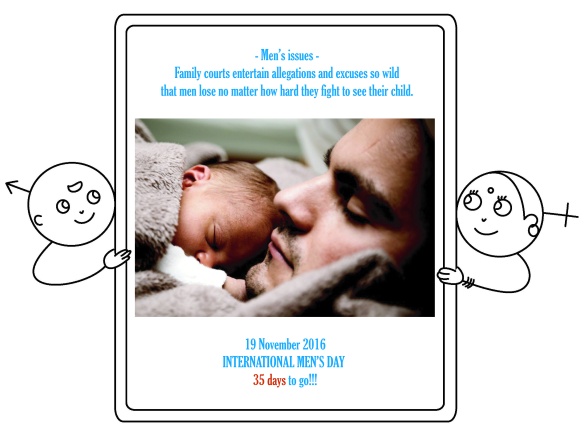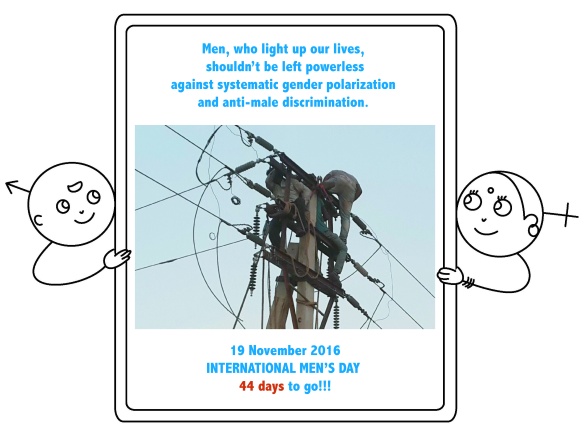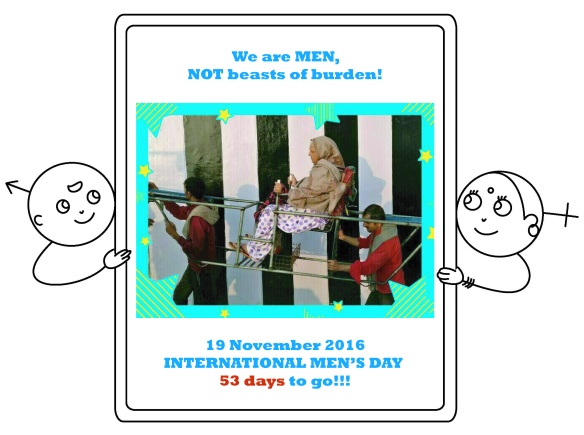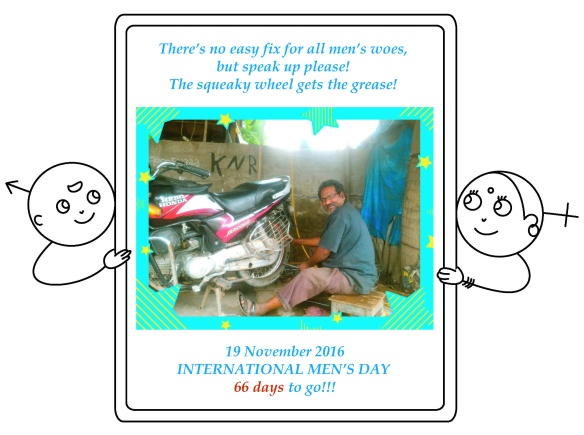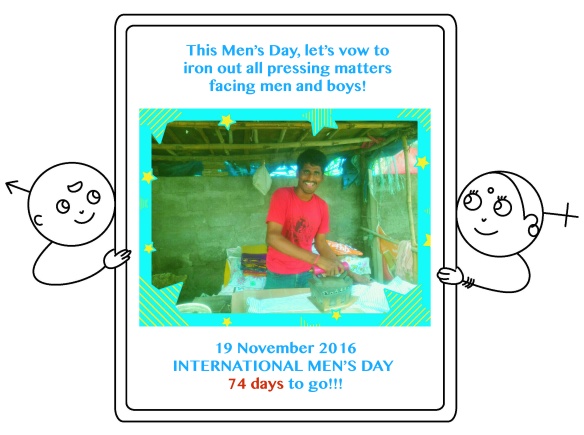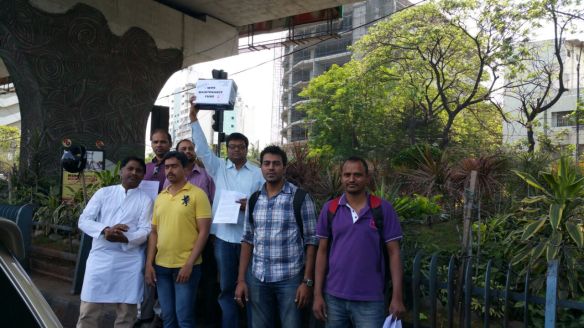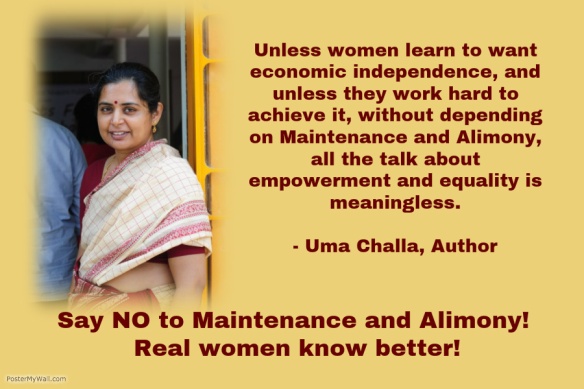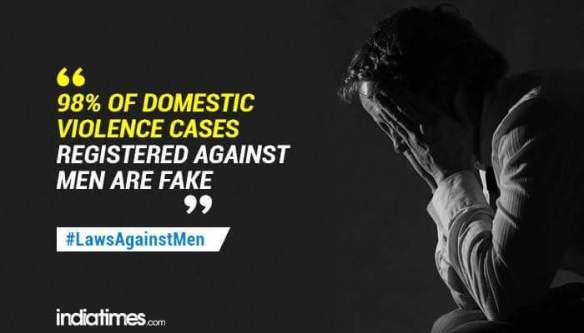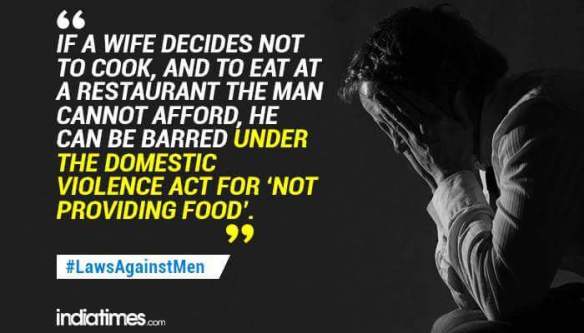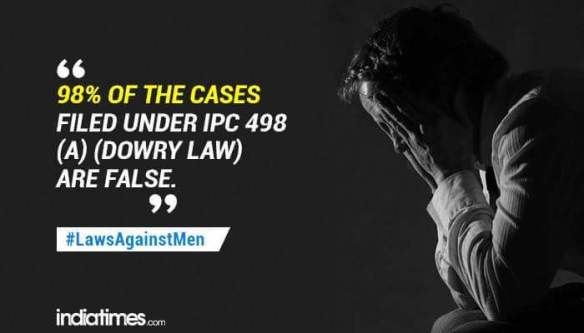During the last few months, there has been a wave of praise in the mainstream and social media for an Indian documentary film on IPC section 498A entitled “Martyrs of Marriage”. The filmmaker, Deepika Bhardwaj, has been extolled not only for technical excellence in filmmaking, but has also been elevated as the messiah for men. Recently, there has also been an expected, well-justified and visible pushback from the men’s movement in India, because the movie is anachronistic, it promotes a feminist lie, misrepresents men’s rights activists (MRAs) and undermines the men’s rights movement (MRM), which provided much support, information and content for the film.
The perspective of the men’s movement and the reasons for the pushback require a close look at the history, significance and purpose of the men’s movement, and the factual narrative that Indian MRAs have fought to establish over the last 10-13 years. It would involve learning, in depth, about why IPC 498A is a malicious law and not a law made to save lives as claimed by the film. People who are not interested in this academic exercise are bound to look to the documentary film as an authentic source of information, representative of MRAs and the entire length, breadth and depth of the MRM.
I would urge everyone to make the effort to know more about the MRM, MRAs and why they would vehemently oppose the only film which claims to give them a voice and show their side of the story; and why MRAs would oppose a filmmaker, who is sympathetic towards a men’s issue, becoming the face of the MRM and the “voice of men”.
To this end, I will direct the attention of the readers towards certain crucial but invisible aspects that do not require you to have any background in the MRM, but just require basic human intelligence to understand.
Every person who is arrested and imprisoned based on a false complaint goes through a phase where they are dying to scream out to the world that they are not criminals. They are stigmatized in the society, they are vilified by the media, and pushed into a corner so much so that the only thought that dominates the person’s existence is the need to NOT be identified as a criminal. There are many who experience the need to be identified as victims, and they want their personal narrative to be heard by someone, especially by those who hold the power to influence the social and political narrative, such as journalists, filmmakers, celebrities and politicians.
However, victimhood is an affliction suffered by but a fraction of individuals who are implicated in false cases. Unfortunately though, individuals and entities that control the narrative do not understand that a need to “not be identified as criminal” does not automatically translate into a “need to be identified as a victim”. As a result, even sympathetic journalists and filmmakers impose victimhood and martyrdom on everyone because victimhood sells, and is seen as the only way to bring attention to problems.
This kind of victimhood is a state of mind, and it does not have anything to do with what life throws at us, false cases included. MRAs who have counseled hundreds of affected men observe that “men carrying victimhood for long periods of time works like an addiction which eventually destroys them. MRAs also feel that fostering or nurturing perpetual victimhood in victimized people is a feminist recipe and does not bode well for any society”. Over the last 10 years, MRAs have worked very hard to exctricate men from this sense of victimhood, to empower them to stand up for themselves, and to take responsibility for changing not just malevolent laws like 498a, but the overall social mindset which sees males as disposable.

When a person does not wallow in victimhood, it is assumed that they are either culpable or that they do not experience any pain. It takes much time and struggle to gather the voice to deny criminality, to maintain the resolve, and fight to the finish to establish one’s innocence in the courts of law. Every person who has walked out of the court after hearing the words “acquitted” knows the feeling of taking a full breath of air, walking with their head held high, with the kind of satisfaction and joy that the heart does not seem enough to hold.
Everyday, the mainstream media keeps declaring innocent people as criminals without trial for the sake of political correctness and ratings. To those who have experienced it, acquittal means restoring one’s honor and dignity, even though one may have lost many years, dear ones, life’s savings and all the things one has given one’s life to. It is such a profoundly liberating experience, that the voice, which for many years, wanted to scream “I am not a criminal”, now wants to scream “I won” until the sound of vindication reverberates all over. MRAs have always fought, worked hard to empower and encourage others to fight, to demonstrate that we are real people and not mere numbers or data points in the National Crime Records Bureau. However, the voice of the acquitted is never heard because the mainstream media chooses to be deliberately silent about them.

As a fellow MRA rightly pointed out to me, given the status quo, “a journalist independently gaining the trust of people who have been victimized by 498A is difficult, and to make them to open up to any publicity via documentaries is even more difficult”. When a journalist comes along, claiming to want to make a film or write about us, members of the movement are always inclined to project individuals who have won their cases to narrate their stories. This is because a person who is still fighting a trial always fears a backlash from his opposition, the police or the court of law. He or she does not want to take the risk of being disbelieved or ridiculed by others because an individual’s story is not considered credible unless their cases have ended in acquittal.
Therefore, when the documentary filmmaker in question approached the Indian MRM for interviews of affected individuals, she was also directed to meet individuals who had been acquitted some years ago. Revisiting profound personal tragedies, many years after the fact and years after acquittal is an ordeal in itself, and not something anybody would want to do. However, MRAs, who chose to take one for the team, reluctantly opened up to the filmmaker who promised to highlight these stories as those of hope and triumph to inspire others to fight. MRAs unravelled personal details to demonstrate that they are normal people, just as vulnerable as anyone else, and traced their own journey to victory, in parallel with their activism in the MRM to inspire everyone to be “that second mouse”. https://www.youtube.com/watch?v=51lFmdChOA0
When these detailed accounts of gallant fight are edited, placed out of context and shown as stories of plight, and the filmmaker uses her film and her public image to promote victimhood, to become the face of MRM and the “voice of men” by lie of omission, one is bound to feel violated. The filmmaker silencing MRAs, by playing the victim card against them is an additional violation that needs to be overcome. Under such circumstances, it takes much time, effort and thought to gather the voice to say “I am not a victim”, and to initiate a meaningful conversation around the important issues concerning MRAs and the MRM. The struggle to deny this imposed martyrdom is just as emotionally excruciating as the one to deny imposed criminality.
It is important to recognize that there is little difference between journalists painting us as criminals for TRPs and filmmakers misrepresenting MRAs as victims just to make the cut in their career.
In this context, it is also important to look at how different individuals who approach the movement identify themselves in very different ways. Many individuals approach the movement for help, but always remain aloof as individuals, see themselves as unique in their hardships, feel entitled to support and help, look for a quick fix and an easy exit. They are the victims looking for a messiah, preferably in female form. In their myopic view, anybody, even a filmmaker, who can offer them a temporary vicarious experience and fleeting hope for change, is a savior. These victims would be willing to let a whole movement and the collective hard work of all the MRAs who dedicated their lives to it, be sacrificed on the altar of their personal desire for quick relief and freedom. Longtime MRAs are usually glad to take one for the team, but everyone must realize that exploitation of personal tragedies, for any reason, is an insult to the dear ones whose honor we fight and win for. It is an insult to the MRM, which gave us life and that we gave our lives to.
While the film, which boasts of highlighting human struggle, ironically, undermines the same, there are some who have been foolish enough to believe and say that MRAs are jealous of a filmmaker’s success. MRAs have much to be proud of because they stand up and fight to restore their own honor and that of their families, and also empower others to fight. With no offense intended, it must be said that there is little to be “jealous” about a victim-turned-filmmaker, who has neither experienced nor understood what fighting means, and promotes victimhood among men.
Some MRAs have been demonized for saying that the filmmaker did not duly acknowledge the MRM and MRAs for their earnest contribution to the film, and for stating that the filmmaker is undermining the movement through calculated silence. While I leave it to experts to comment on the technical excellence of the film, I propose a thought experiment and ask the reader to imagine what the filmmaker’s reaction would have been, had someone taken all the credit for her hard work, through lies of omission. MRAs have been maintaining a dignified silence about this issue for several months, but when a filmmaker takes advantage of her popularity to undermine a long-standing movement, and becomes the “voice of men” by lies of omission, silence is no longer an option.







